Your landscape design can do more than beautify your garden—it can also play a vital role in supporting the performance, efficiency, and lifespan of your HVAC (Heating, Ventilation, and Air Conditioning) system. A well-thought-out landscape can shield your system from elements, improve airflow, and reduce energy use. In this article, we’ll explore 7 smart landscaping tips recommended by HVAC professionals that help increase your unit’s longevity and efficiency while enhancing your outdoor space.
1. Maintain Proper Clearance Around the Outdoor Unit
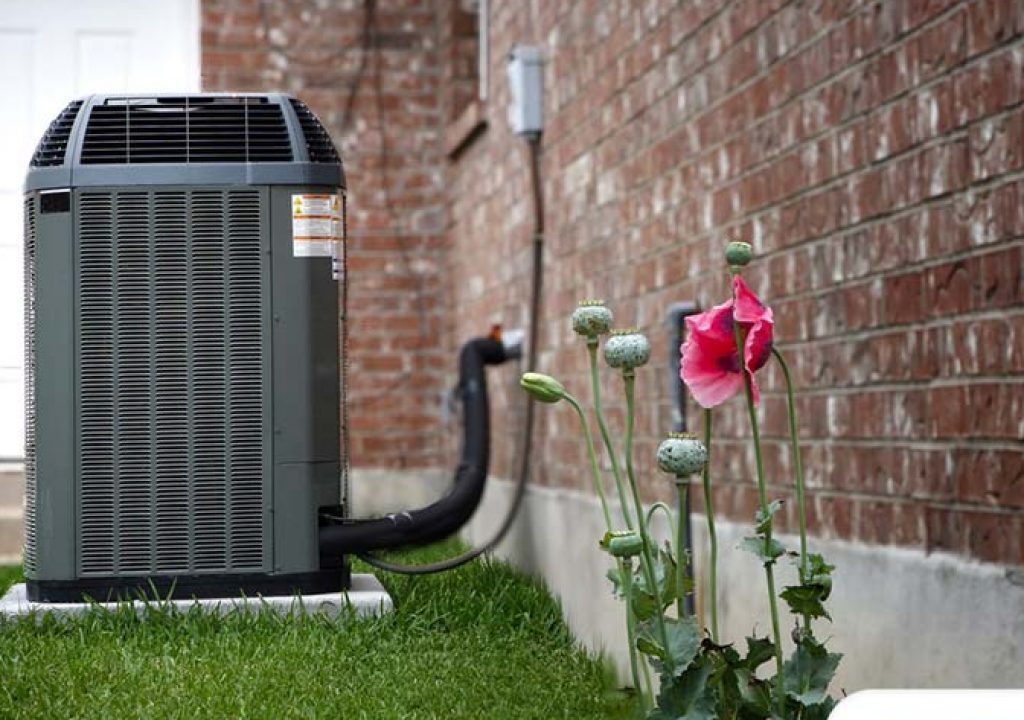
One of the most critical yet often overlooked tips is maintaining enough space around your outdoor HVAC unit. At least 2 to 3 feet of clearance is recommended on all sides.
Why it matters:
This space allows for adequate airflow, which is essential for the unit to function correctly and efficiently. Overgrown shrubs, tall grass, or nearby fencing can restrict airflow, making the system work harder and increasing wear and tear.
Tip from the pros:
Use gravel or low-growing ground cover plants around the base of your HVAC unit to discourage weed growth and maintain visibility without compromising airflow.
2. Plant Shade Trees Strategically
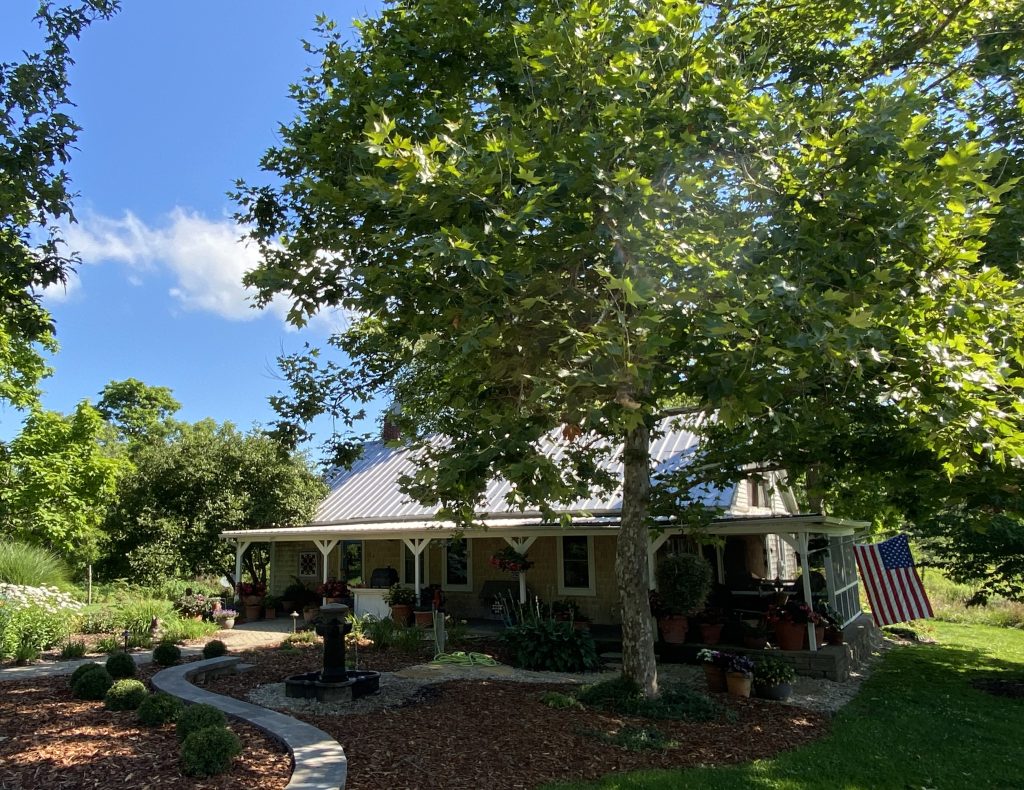
Planting deciduous trees or tall shrubs to provide shade to your outdoor HVAC unit can significantly lower the surrounding temperature.
Why it matters:
Lower temperatures around the unit help it run more efficiently and reduce energy consumption. In the summer, the shaded environment reduces the amount of work required to cool your home.
Tip from the pros:
Make sure any tree or large shrub planted for shading is at least 5 to 10 feet away from the HVAC system to prevent root interference and maintain clear airflow.
3. Use Windbreaks to Protect the System
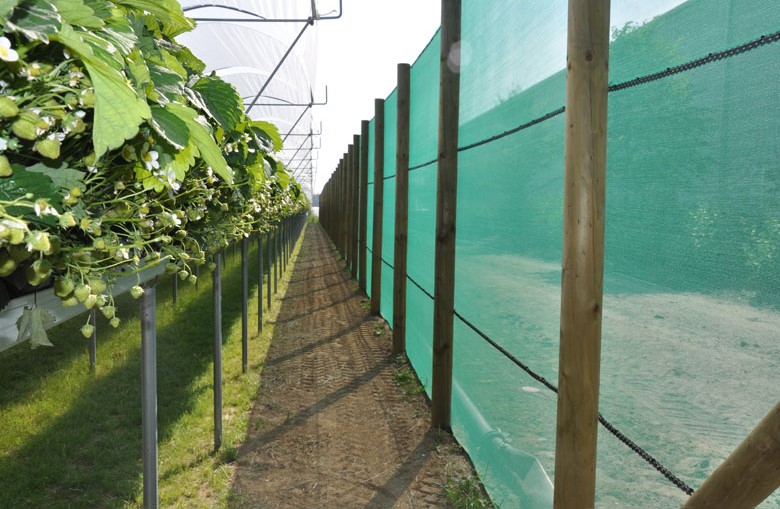
Installing a row of hedges, a fence, or lattice panels as windbreaks can protect your HVAC unit from debris and harsh weather.
Why it matters:
Strong winds can blow dust, leaves, and other debris into the outdoor unit, clogging the coils and reducing efficiency. Windbreaks act as a barrier while still allowing ventilation.
Tip from the pros:
Opt for a semi-permeable barrier rather than a solid wall. This ensures airflow isn’t completely blocked while still shielding the unit from wind gusts and flying debris.
4. Incorporate Gravel Beds or Mulch Around the Unit
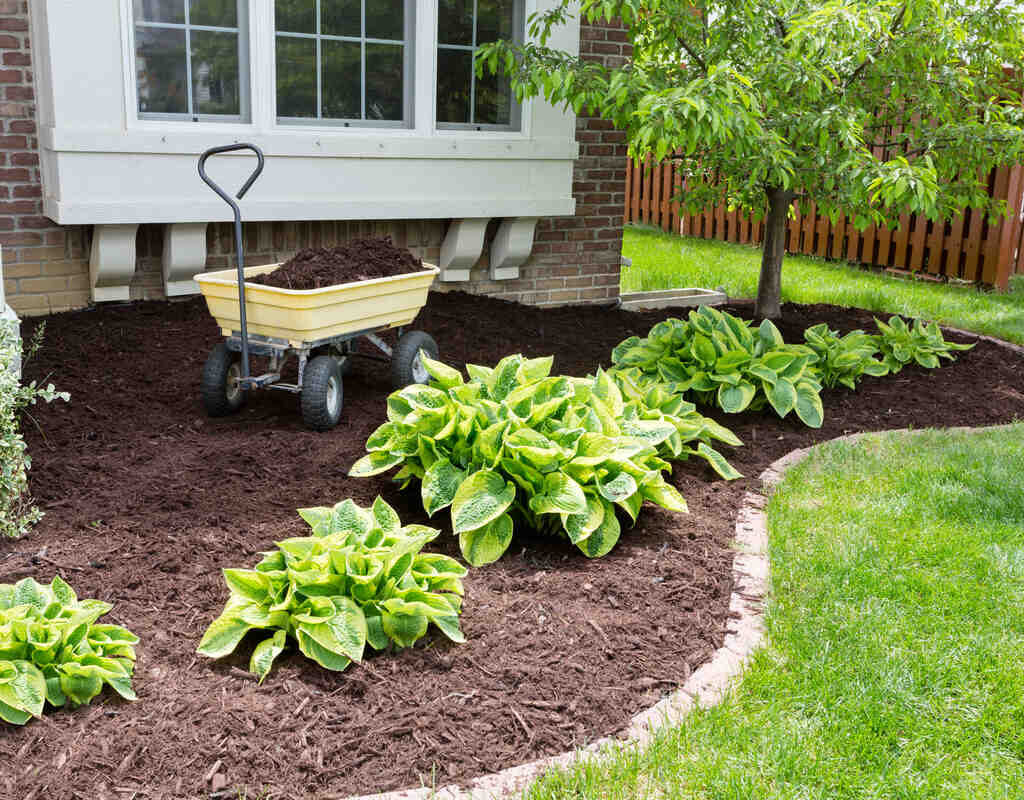
Surrounding the HVAC system with a gravel bed or mulch area helps improve drainage and minimize mud or plant overgrowth.
Why it matters:
Good drainage prevents standing water that can rust or damage HVAC components. Additionally, gravel discourages weed growth and doesn’t get blown into the unit like soil or mulch sometimes can.
Tip from the pros:
Use pea gravel or crushed stone with landscape fabric underneath to minimize maintenance and ensure longevity.
5. Avoid Overwatering Near the HVAC Unit
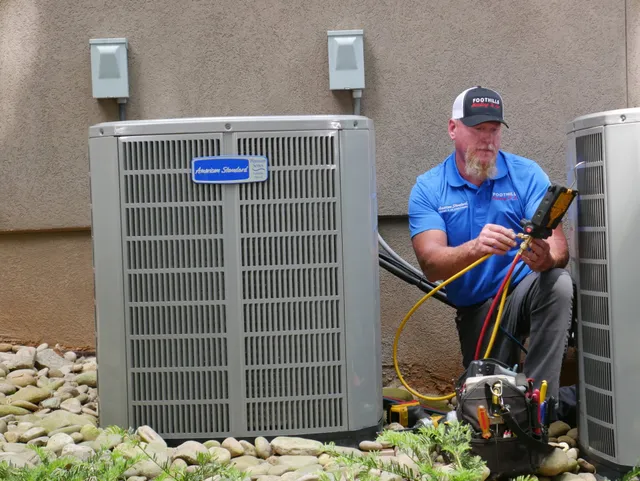
Whether from sprinkler systems or rain runoff, too much water around your HVAC unit can lead to corrosion and mold.
Why it matters:
Excess moisture can damage electrical components and encourage algae and rust on the coils, leading to performance issues.
Tip from the pros:
Adjust irrigation heads to prevent spraying directly on the unit, and make sure the surrounding grade slopes away from the system for proper water runoff.
6. Camouflage the Unit with Decorative Screens or Trellises
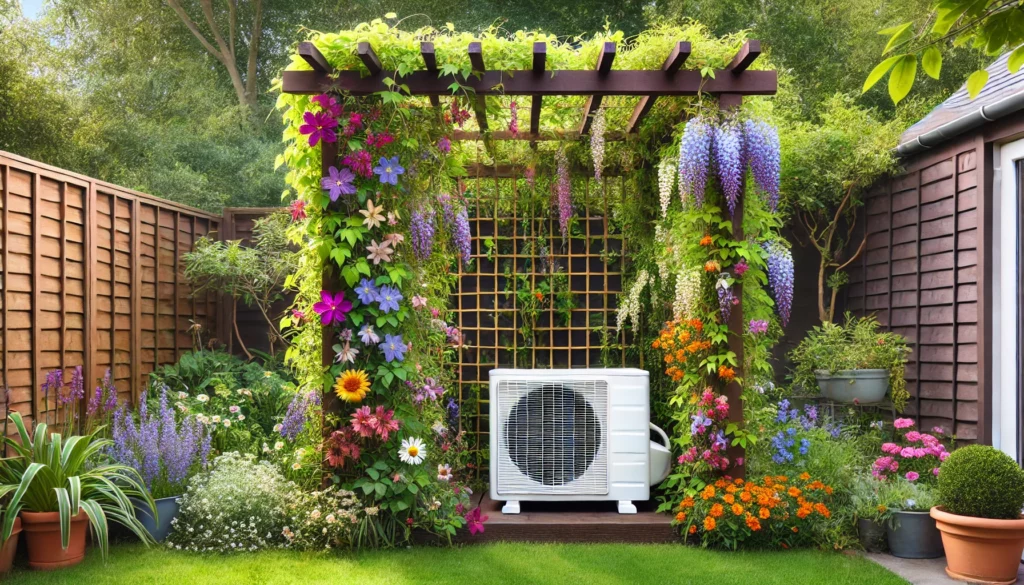
While aesthetics are important, any attempt to disguise your HVAC system should not come at the cost of efficiency.
Why it matters:
Decorative screens, trellises with climbing plants, or louvered panels can blend the unit into your landscape while also allowing airflow and access for maintenance.
Tip from the pros:
Install any screen or structure at least 3 feet away from the unit and choose climbing plants like clematis or morning glory that are non-invasive and lightweight.
7. Regularly Trim Nearby Foliage and Clean the Area
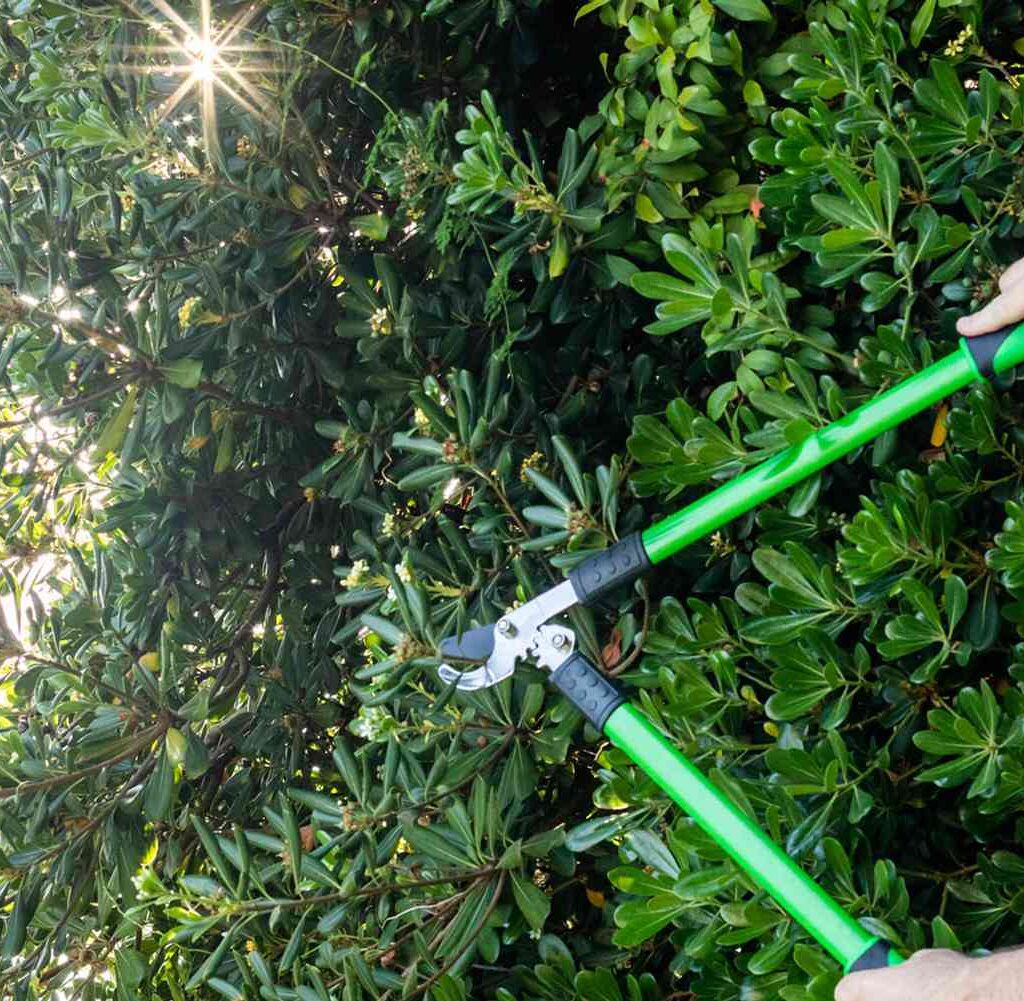
Routine landscape maintenance plays a major role in HVAC care. Leaves, pollen, and twigs can accumulate quickly, especially during seasonal transitions.
Why it matters:
Debris buildup reduces airflow, clogs the coils, and can lead to overheating or long-term mechanical problems. A clean and clear area around the unit helps it perform at its best.
Tip from the pros:
Schedule monthly checks during spring and fall to clear away debris, trim back vegetation, and ensure pests aren’t nesting around the unit.
Conclusion: Merging Function and Design for HVAC Health
Smart landscaping doesn’t just make your garden more beautiful—it can also extend the life of your HVAC system and cut down on energy costs. From shading and drainage to airflow and debris control, each of these tips can contribute to a more efficient and longer-lasting system. When in doubt, consult with an HVAC professional and a landscape designer to create a garden layout that supports both form and function. A little planning goes a long way toward achieving a comfortable home and a healthy outdoor environment.

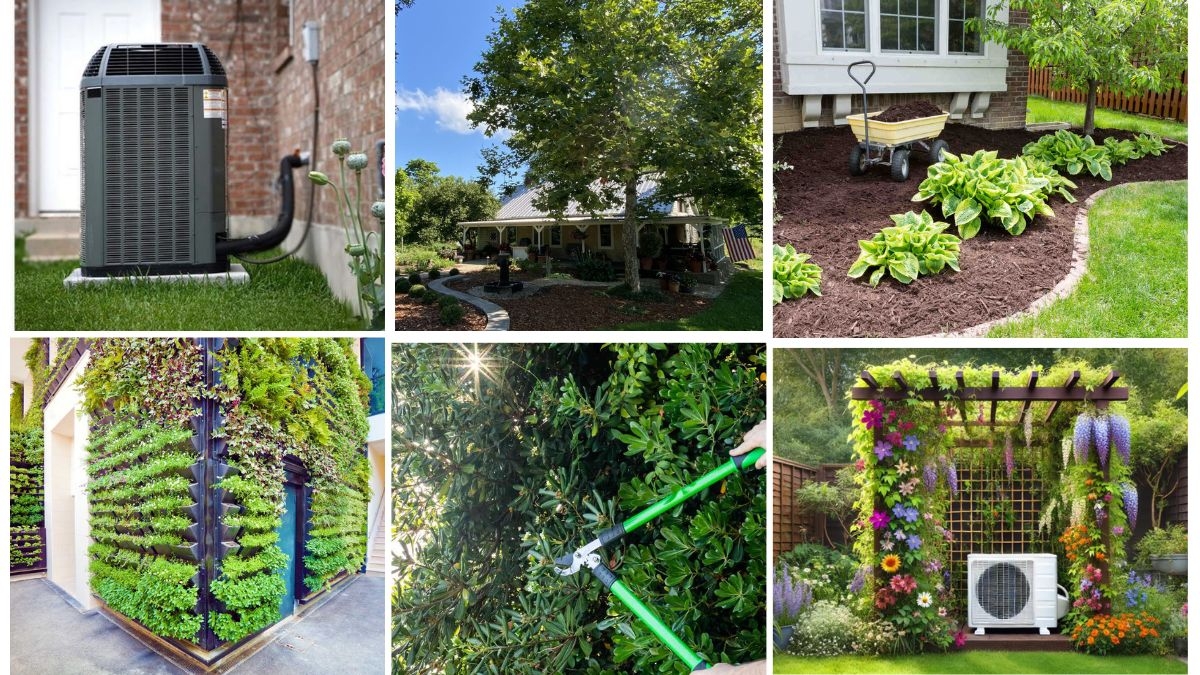




Leave A Comment